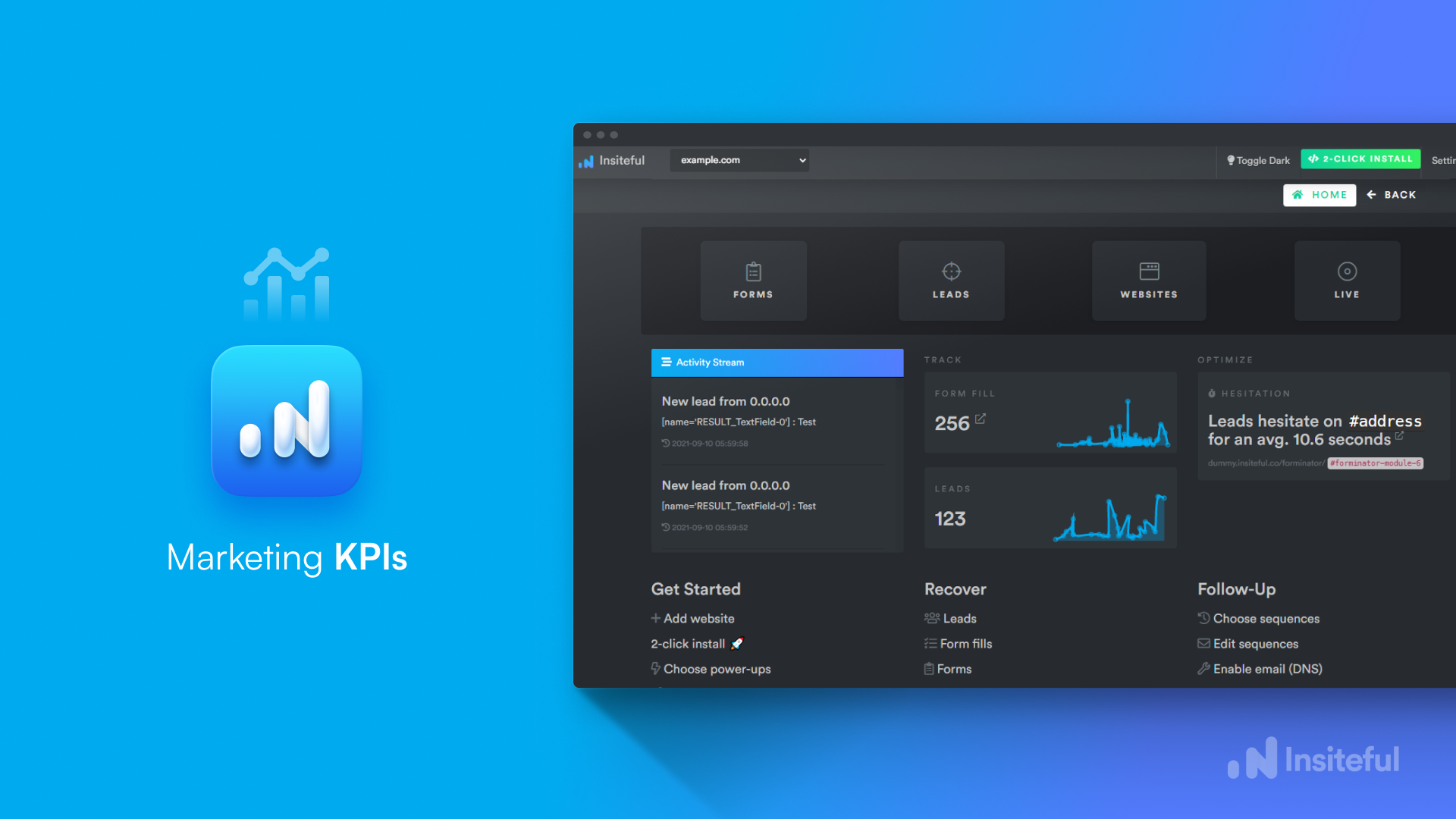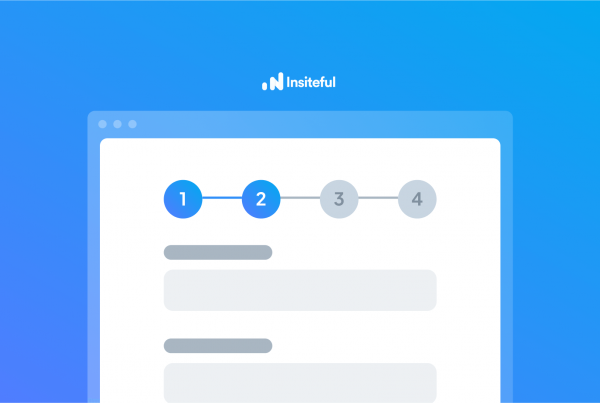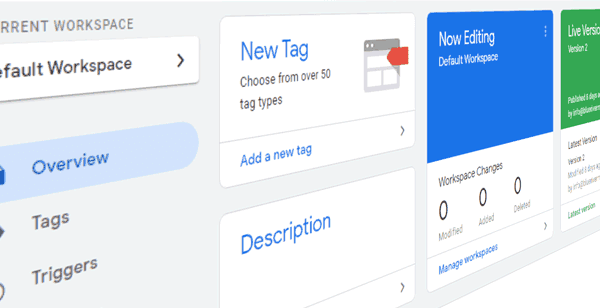What are KPIs?
When you craft your marketing strategy & campaigns, the results often vary widely. But how can you measure the effectiveness or failure of any given effort? The answer is to use KPIs, or Key Performance Indicators. These are measurable goals that help you gauge your success.
Marketing KPIs measure specific campaign objectives through measurable values. As a result, you can measure marketing efficiency at the end of the campaign.
Why do KPIs matter for digital marketing?
Your business’ growth strategy must include an understanding of what’s working and what’s not working in marketing. Even if your marketing is working well and overachieving its targets, as a business, you should have an understanding of why it’s working. Similarly, if the opposite is true and your competitor has an edge over you, it’s of paramount importance to understand why their marketing team is winning. Failing to track and understand marketing KPIs is akin to throwing darts in the dark: a decline in revenue, unhappy customers, and a decline in business growth follows.
The 10 most important marketing KPIs to measure
For a more successful digital marketing strategy, you should track the following specific KPIs that can help you understand which marketing campaigns and strategies are most effective in reaching your sales targets.
1. Click-to-conversion Rate
A conversion happens when a user performs a desired action on your website. This could be buying a product, downloading a file, clicking a link, or any other intended action.
Click to conversion rate is the percentage of conversions there were out of the total number of clicks. When someone clicks on an advertisement, Click to conversion rate can help you determine which ad converts the most. This number should be higher if your goal is conversion.
2. Conversions vs. Purchases
Comparing conversion rates with purchase rates is critical to measuring the effectiveness of your lead forms and funnels. Your web forms help you generate email and phone leads, but what % of those leads turn into paying customers? The drop-off rate between conversion to a lead and purchase will tell you the quality of the traffic & leads generated by your existing marketing efforts.
For instance, if your website has a sign-up or booking form with a healthy click-thru and submission rate, but low conversion to purchases, this would suggest that the traffic you are driving to your website is low-quality: your visitors are either confused, looking for something else entirely, or too cheap. Examining conversion vs. purchase rate will help clear the noise of vanity metrics so you can focus your marketing efforts on targeting your ideal customer persona (ICP) and reduce wasted ad spend.
3. Gross Revenue:
A company’s gross revenue is the amount of money it earns. This is often referred to as the “top line”: meaning this figure is calculated before expenses, deductions, allowances, etc. However, the ability to sell goods or services is not the same as the ability to make a profit. Gross Revenue provides a reliable indicator for service businesses where there is little difference between gross and net sales. This trend line shows you whether billings are increasing, decreasing, or remaining the same and can act as a North Star for all your marketing efforts.
4. Leads
The purpose of this KPI is simple: to measure how many leads your business is generating. The more leads you get, the higher the chance is to convert them into customers and thus increase your profits.
You should also be familiar with different types of leads. Marketing qualified leads (MQLs) are leads judged to be more likely to convert to customers than others. These people have indicated they are more deeply engaged, sales-ready contacts than your usual leads, but have not yet become fully fledged opportunities. The engagement can be in the form of downloading an eBook or filling a form.
Sales-qualified leads (SQLs) are leads that your sales team accepts as worth contacting directly. These prospects have gone through a much more extensive vetting process and are ready to commit.
Understanding the number of leads and their types will help you understand your company’s Leads to Close ratio – that is, the number of leads you have received compared to the number of leads you have closed
5. Customer Acquisition Cost
In customer acquisition cost (CAC), we look at how much money it takes to convert a potential lead into a customer. In addition to improving your marketing, this metric helps you decide how to allocate your marketing budget.
For example, if you spend too much money on acquiring a customer and the profit they give is less than the cost of acquiring them, it wouldn’t make sense for you. Basically, this helps businesses decide how much money to spend on attracting customers
6. The Lifetime Value of a Customer (LTV)
This metric indicates the total amount of revenue a business can expect to make from a single customer.
How can this KPI help you? This is a useful metric to compare to CAC. For example, if your CAC is higher than your LTV, then you’re probably spending too much money acquiring your customers. If you want to find out the lifetime value of a customer, you will have to add up all the sales that you have made to that customer over the course of your relationship.
7. Bounce Rate
A bounce rate is the percentage of users who leave your website after viewing one page rather than clicking through to another page. The bounce rate of a website is usually a good indicator of whether the visitor found the desired content on the website and whether the respective demand was satisfied.
By tracking bounce rates, you can determine how effective your content and design are at attracting and retaining visitors to your site. Pages and forms with high bounce rates likely contain friction points that are warding off potential customers: you can automagically identify problem areas such as Confused Form Fields with Insiteful.
8. Lead Recovery Rate
Not everyone who visits your website will immediately convert into a paying customer. There are different types of abandonment such as cart abandonment and form abandonment. Lead recovery rate is the metric used to calculate the recovery of leads after they have abandoned your website. Every marketing team should have a lead recovery solution in place to seal the leaks in your online funnels and recapture missed opportunities.
This metric will help you determine the best strategies to follow up with and recover leads and thereby optimize your existing marketing efforts to be more effective and generate a higher ROI. It will help you identify opportunities for improvement and bottlenecks in your funnel, so you can find what works for your business.
9. Email Marketing Stats
85% of US retailers already recognize email marketing as a key customer acquisition tactic, especially for start-ups and small businesses (SMBs). On average, email marketing generates a 122% return on investment for every $1 spent. It is safe to say that email marketing is as effective as it has even been. But is that the case for your business too?
Tracking email marketing stats (such as open & click rate, as well as NPS (net promoter score) and unsubscribe rates) will allow you to gauge the success of your marketing campaigns and if you need to make changes to your marketing strategy. Using email remarketing in tandem with ad retargeting (ie. Facebook Custom Audiences, Google Customer Match) is a great way to build an omni-channel lead recovery strategy.
10. New Opportunities/Leads per week/month
Every new lead is, for the most part, an unqualified lead at the beginning. On the other hand, qualified leads meet qualification requirements. The definition of a qualified lead may vary from organization to organization, but most often, an opportunity is a qualified lead.
To remain on track with revenue goals, you have to understand your lead-to-opportunity ratio. Having established a baseline ratio allows you to determine the number of leads needed to create your target growth, which will result in predictable revenues. An important step in analyzing the sales funnel is to look at lead-to-opportunity ratios. Analyzing what is working and what isn’t will give you a better idea of where quality leads come from and let you guide your marketing and sales team more effectively.




